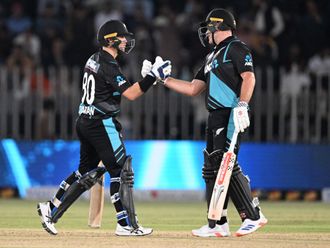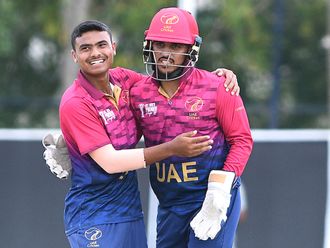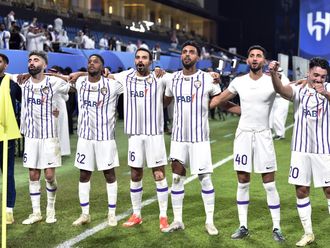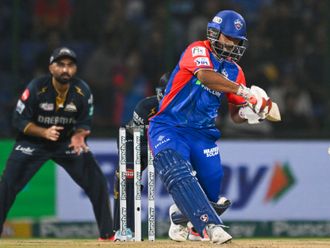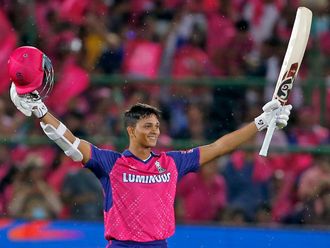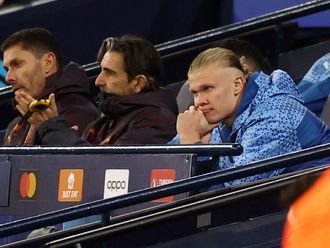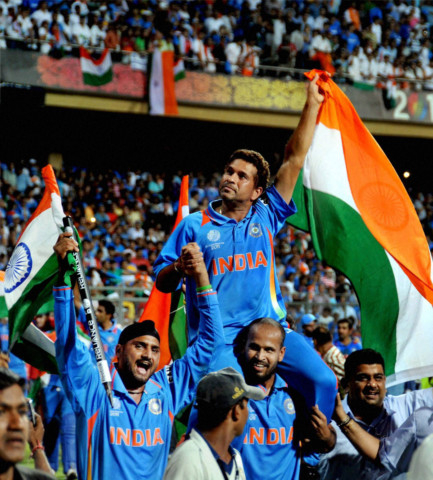
Two different conversations with two close friends, both of whom are much revered national icons. The first one was with Sachin Tendulkar a few days after India had won the ICC World Cup in April 2011. We were taking stock of a career unrivalled and Tendulkar was recounting some of his highest points.
Inevitably, the 1992 Australia tour featured in it. This is what he had to say: “Dada (Sourav) and I were roommates in Sydney and a little past midnight on the eve of the SCG Test I was doing some shadow practice, trying to plan how to play the Australian bowlers the next day. Dada got up and was a little taken aback to see me do so that late at night. He asked me to go to sleep for I had to bat the next day.”
And here’s Sourav on the same incident: “I wasn’t playing the match and was startled to see Sachin shadow batting at 1am in the morning. It was crazy. I couldn’t sleep and remember telling him that he should go to bed for he needed all the energy in the middle the next day.”
The story doesn’t end here. With little sleep the night before, Sachin was understandably tired the next day. And to catch up on some sleep while India was batting, he did something that only he can. “I told Dada that I was taking a nap on the dining table in the SCG dressing room and he should wake me up in some time. I had a good 45 minutes sleep.”
Sourav: “He actually slept on the dining table for some time and when the next wicket fell, I woke him up. When it was his turn to bat, he scored a majestic 148. Clearly we were seeing a genius in action.”
There is a book here, isn’t it? How can these stories not be written up for millions of fans to savour? How can the Master Blaster, a treasure trove of such stories, not open up to tell us his story in his own words? It was a book waiting to be written.
Mock sessions
Many mock sessions were conducted in his house — discussing the structure and workflow before we were both convinced that we were ready to get off the blocks. It had to be a Test match innings and not a T20 slog. In the very first session itself, I learnt things, which I had no knowledge of despite having covered the World Cup to the best of my ability.
Here is a sample: On returning to the team hotel at the end of the final, Sachin and Anjali had put flowers in their ears and danced to loud Bollywood music in the confines of their room, something they had never done in their lives. All inhibitions had been shed for it was a night like no other.
Thereafter, Virat Kohli, Yuvraj Singh and Harbhajan Singh had sung ‘Tujme Rab Dikta Hain, Yaara Main Kya Karoon’ (a Bollywood number, which when translated is: “We see the god in you, what can we do,” much to the embarrassment of the master). The book had started with a bang.
There were some spectacular sessions down the line and many of them happened by chance. We had just finished talking about the second of Sachin’s hundreds against Dale Steyn in South Africa in 2010 when I asked him how he read Steyn’s outswingers. We had already recorded for close to two-and-a-half hours and were gradually feeling tired. To my surprise, Sachin stood up to demonstrate how he always followed the ball’s release point. The discussion flowed to Murali’s doosra, Shoaib Akhtar’s faster delivery, Ben Hilfenhaus’ slower bouncer and I soon realised that there was no way I could make my flight back to Kolkata from Mumbai that evening.
Another two-and-a-half hours down the line, I had Sachin on how he faced the very best bowlers in the course of his career and how he tried to work each of them out. Not always was he successful but the effort was always more than a hundred per cent.
There have been insinuations from some quarters that I am perhaps responsible for what Sachin has said on Greg Chappell. Only if such people knew the truth. It is Sachin’s book word for word. He has read the text more than 10 times and every word on Greg Chappell is his own. He had always felt that it was his duty to reveal what was going wrong in Indian cricket under Chappell and that’s what he has done.
Tight-lipped
Why is there no mention of match-fixing in the book? Did we not talk about it? Of course we did. And each time we did, Sachin made it absolutely clear he would not cast aspersions without proof. Sachin naming a particular player or administrator would have meant his reputation would be tarnished forever and that was never in the realm of possibility without substantial proof.
There were disagreements and debates in the course of writing. Should he open up on Anjali? Will his conservative upbringing permit him to do that? Can a private chapter be brought out into the open? Is it fair on his family? After many hours of discussion, he was convinced that his fans deserved to know.
It was also important to tell the world how much he appreciated the support Anjali has forever given him. Once convinced, he was in full flow.
“It was Anjali who spoke to our parents during out engagement and again during the wedding. She has far better social skills than I do…. we met for the first time when she came to my house posing as a sports journalist and all I could offer her was chocolates, which I had cut into pieces to fill up the plate…..I don’t call her by any name. Not ‘Anjali’ not ‘Anja’ nothing. Coming from the kind of background she has, it took a lot on her part to be able to adjust in a joint family set up in Sahitya Sahawas colony...”
It is a very sweet love story and remains a real high point of the book for me.
Playing it My Way is the story of Sachin Ramesh Tendulkar in his own words, meant for his legion of fans who deserve to know. And as an analyst and student of Indian cricket, I will forever remain proud having co-written it.
— The writer is the co-author of Sachin Tendulkar’s official autobiography ‘Playing It My Way.’



